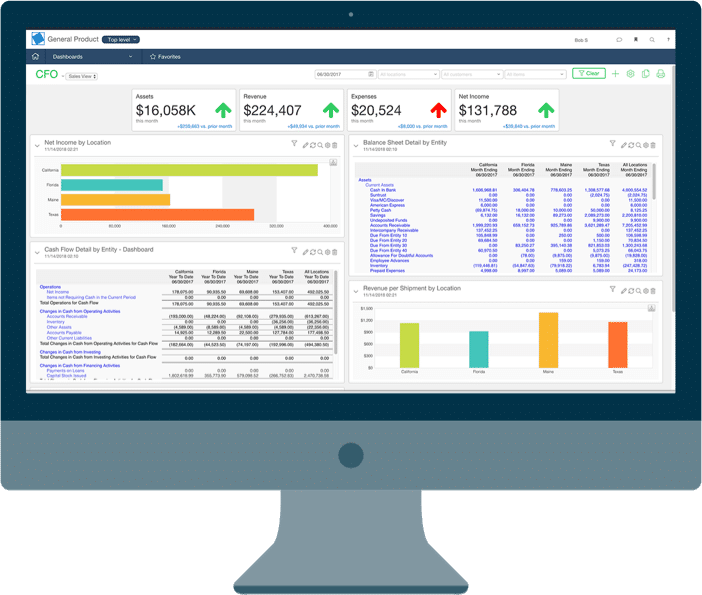What is accumulated depreciation?
Accumulated depreciation is a fundamental principle in accounting, especially in the areas of asset control and financial disclosure. It signifies the overall depreciation cost acknowledged for a physical asset throughout its useful life until a certain period. Essentially, it indicates the amount of an asset’s cost that has been assigned as an expense over a period of time.
Upon acquiring a tangible asset like machinery, equipment, or buildings, a company bears an initial cost. Nevertheless, these assets are not usually fully expensed in the year of acquisition. Instead, their costs are distributed over their anticipated useful lives to align the expense with the revenue they contribute to, in adherence to the matching principle of accounting.
Fixed asset depreciation refers to the methodical distribution of the expenses associated with a physical asset throughout its useful lifespan. It signifies the gradual deterioration, becoming outdated, or decline in value that the asset undergoes over time as a result of its utilization or the passage of time. This allocation procedure enables businesses to evenly distribute the cost of an asset over its anticipated period of usage, thereby presenting a more precise depiction of the asset’s contribution to revenue generation.
Accumulated depreciation signifies the total depreciation expense that has been acknowledged on an asset since its purchase. It is classified as a contra-asset account, which implies that it is recorded as a negative asset on the balance sheet, effectively reducing the value of the associated asset. By subtracting the accumulated depreciation from the asset’s original cost, one can ascertain the book value or carrying amount of the asset.
For example, if a company purchases equipment for $50,000 with an expected useful life of 10 years and no salvage value, it might depreciate the equipment using the straight-line method, allocating $5,000 of depreciation expense each year. After three years, the accumulated depreciation would be $15,000 ($5,000/year x 3 years). If the equipment’s historical cost remains at $50,000, its book value would be $35,000 ($50,000 – $15,000).
Accumulated depreciation serves several purposes within accounting:
- Asset Valuation: By reducing the historical cost of an asset by its accumulated depreciation, the carrying amount or book value reflects a more realistic value of the asset on the balance sheet. This helps stakeholders understand the true worth of the assets owned by the company.
- Financial Reporting: Accumulated depreciation is reported on the balance sheet alongside the corresponding asset, providing transparency about the extent of depreciation recognized on the assets and facilitating informed decision-making by investors, creditors, and other stakeholders.
- Taxation: While accounting depreciation methods might differ from tax depreciation methods, accumulated depreciation is still crucial for calculating taxable income. It influences the amount of depreciation expense deducted from taxable income, thereby impacting the taxes payable by the company.
- Asset Replacement Planning: By tracking accumulated depreciation, companies can assess the ageing and wear of their assets, aiding in decision-making regarding repairs, maintenance, or eventual replacement of assets nearing the end of their useful lives.
Accumulated depreciation formula
How to calculate accumulated depreciation represents the total depreciation expense recorded for a tangible asset over its useful life. The accumulated depreciation formula is straightforward:
Accumulated Depreciation = Depreciation Expense per Period x Number of Periods
Where:
- Depreciation Expense per Period is the amount of depreciation recognized in each accounting period.
- Number of Periods refers to the total number of periods over which the asset’s depreciation is being calculated.
Alternatively, if you have access to the asset’s original cost and its salvage value, you can use the following formula to calculate accumulated depreciation:
Accumulated Depreciation = Original Cost of Asset – Salvage Value of Asset
This method subtracts the estimated salvage value (the amount the asset is expected to be worth at the end of its useful life) from the original cost of the asset to determine the total amount of depreciation recognized up to the current period.
It’s essential to accurately calculate accumulated depreciation as it impacts an entity’s financial statements, affecting metrics such as net book value and net income.
AssetAccountant – saving you from spreadsheets since 2019
Accumulated depreciation normal balance
Accumulated depreciation normal balance signifies the customary accounting procedure of documenting the total depreciation expense of an asset throughout its useful lifespan. Depreciation involves systematically allocating the cost of an asset as an expense over its useful life. The accumulated depreciation’s normal balance is a credit balance, indicating the overall amount of depreciation expense recorded for an asset since its acquisition.
Accumulated depreciation in accounting signifies the decrease in the carrying value of an asset on the balance sheet. As assets depreciate, their value diminishes, and this reduction is shown through accumulated depreciation. By subtracting this contra-asset account from the original cost of the asset, the net book value is calculated, indicating the amount of the asset’s cost that has been used up or depleted over time.
Accurate reporting of a business’s financial position relies on the essential concept of the normal balance of accumulated depreciation. This concept ensures that the balance sheet accurately reflects the true economic value of assets, taking into account their usage and aging. Furthermore, it enables the proper alignment of expenses with revenues in the income statement by recognizing depreciation expense over the useful life of the asset.


Depreciation calculator
AssetAccountant is fixed asset software that automates fixed asset depreciation and lease accounting. It is an automatic depreciation calculator engine that also posts journals to the General Ledger.
It combines detailed interpretation of Tax and Accounting rules with a modern user interface design, making it easy to create and maintain a fixed asset register.
We take depreciation and leasing seriously
We undertake detailed modelling of fixed asset depreciation and lease calculation rules for both accounting and tax.
We monitor changes to ATO tax rulings and accounting standards like IAS 16 and IFRS 16 so you don’t have to.
And, of course, we are ISO27001 certified.
Why our clients love AssetAccountant


Fantastic product - has literally saved me hours of work.


Ever wanted the big company fixed asset system without all the clunkiness and overthinking on the part of the software developers (I'm looking at you Thomson Reuters...)? Well then you need AssetAccountant. It provides just the right mix of complex depreciation calculations and beautiful user interface. It's a system designed by accountants and executed perfectly by developers. The integration is seamless with Xero (you can sign into AA with Xero credentials which is awesome if you are already running Xero on your browser) and journaling synchs are very flexible between the two applications. Then there is the price. I challenge you to find a more robust fixed asset system at these price points. Well done AssetAccountant.
You get me.
I now have my big boy jocks back on for fixed asset management....and they fit!









Ready to kick some assets?
- AssetAccountant is fixed asset software that automates fixed asset depreciation & lease accounting and posts their journals to the General Ledger.
- AssetAccountant combines detailed interpretation of Tax and Accounting rules with a modern user interface design, to simplify the process of creating and maintaining your fixed asset register.
- AssetAccountant is sophisticated enough for Wall Street, user-friendly enough for main street.
- AssetAccountant is for worldwide application 🌎













































